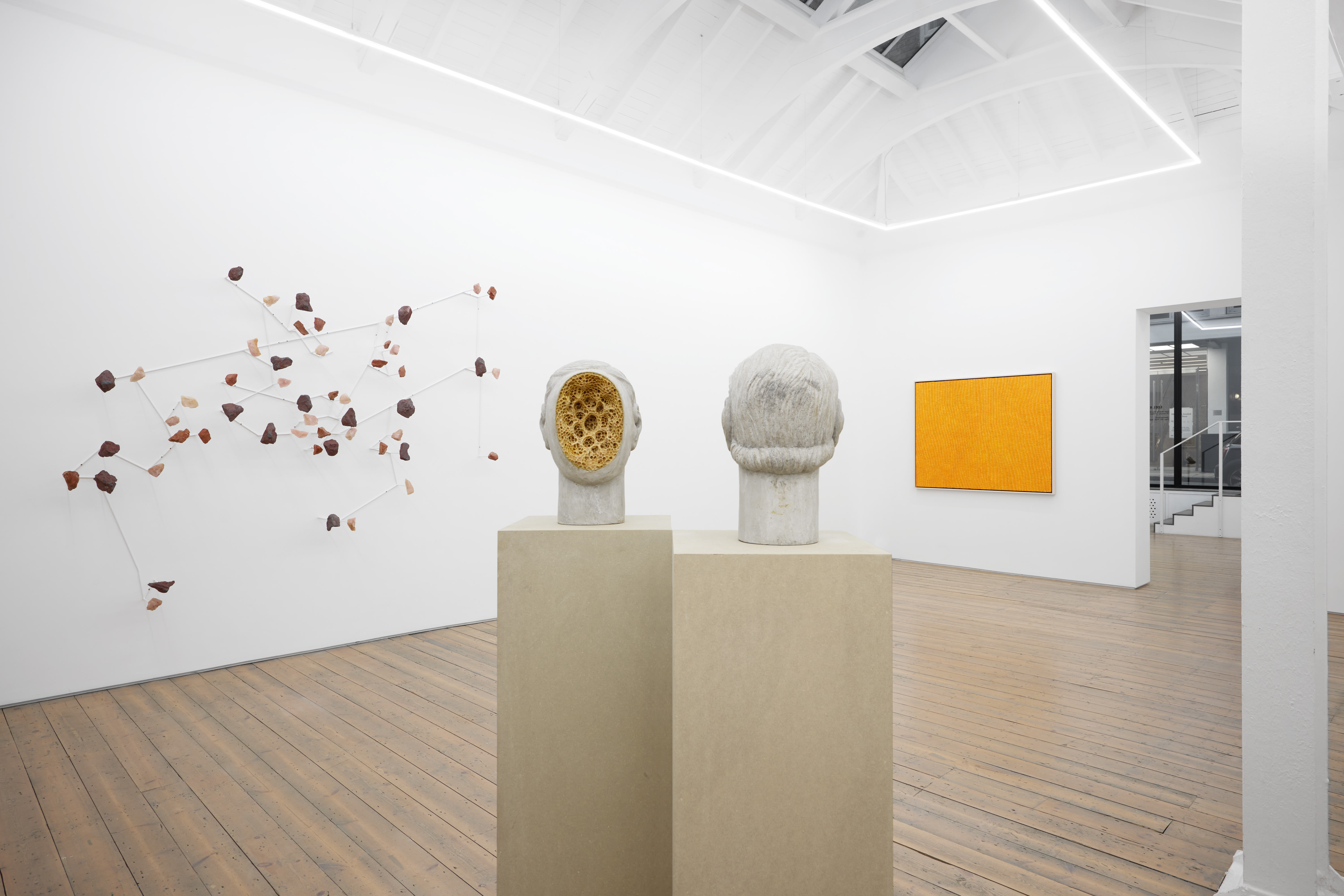10 January 2025 ‘Where did it all go wrong’ is a question I ask myself almost daily. American ecologist David Abram, whose 1996 book The Spell of the Sensuous is the inspiration for this group show at Edel Assanti, thought he knew the answer: it all went to shit when we figured out how to write.
The basis of his theory is that the codification of language into written form was a turning point for humanity that saw us sever our ties with nature. Not agrarianism, not industrialisation, but pen and bloody paper.
There’s language all over the opening room of this show. Or at least it looks like language. Mirtha Dermisache was an Argentinian artist who published endless written screeds and texts and diatribes, but all in indecipherable, invented alphabets. These amazing, subtle works look like alien love letters, or poems, or shopping lists, but they carry no actual linguistic meaning, they are ruptures of the written form, a breaking of established language borders that resets you in preparation for the rest of the show.
Two swirling, psychedelic boars bound across a dark, turbulent countryside in a Kat Lyons painting, rocks and crystals jut out of the wall in a Bronwyn Katz installation, a twisting sculpture on the floor by Marguerite Humeau looks like it was designed by bees, a head on a plinth by Anna Hulačová is filled with honeycomb, two earth-toned paintings by aboriginal Australian artist Yukultji Napangati are stunning abstract landscapes. Presented like this, all the work seems to posit our contemporary life in some sort of opposition to our basic connection with nature, like we’ve lost some intrinsic part of ourselves by watching Netflix instead of hunting bison.

Each Place Its Own Mind, installation view, Edel Assanti, 2025. Courtesy Edel Assanti. Photo: Tom Carter.
Noémie Goudal’s images of mountains in the next room urge viewers to think in deep, geological time, rather than be restricted by the piddly human conception of history; Emmanuel Van der Auwera’s AI-generated video is based on Reddit threads of people heartbroken by the loss of a romantic AI chatbot. The past, present and future are clashing everywhere.
I’m sceptical of the art world’s awkward fetishisation of indigenous knowledge, I’m not convinced by the simplistic, fatalistic, nature-bro position that humanity went wrong when it evolved technology or language, and I’m not particularly keen on being lectured on what a bad human I am in a commercial art gallery, all of which this show manages to do a bit of.
But it succeeds by not being proscriptive, by seeing its conceptual basis as a way of bringing together artists who think in similar ways about nature and time and the speculative future of humanity, a loose grouping of artists who think things are kind of messed up right now. Whether that’s because of the invention of written language is up for debate, but it’s hard to argue that they’re wrong.

